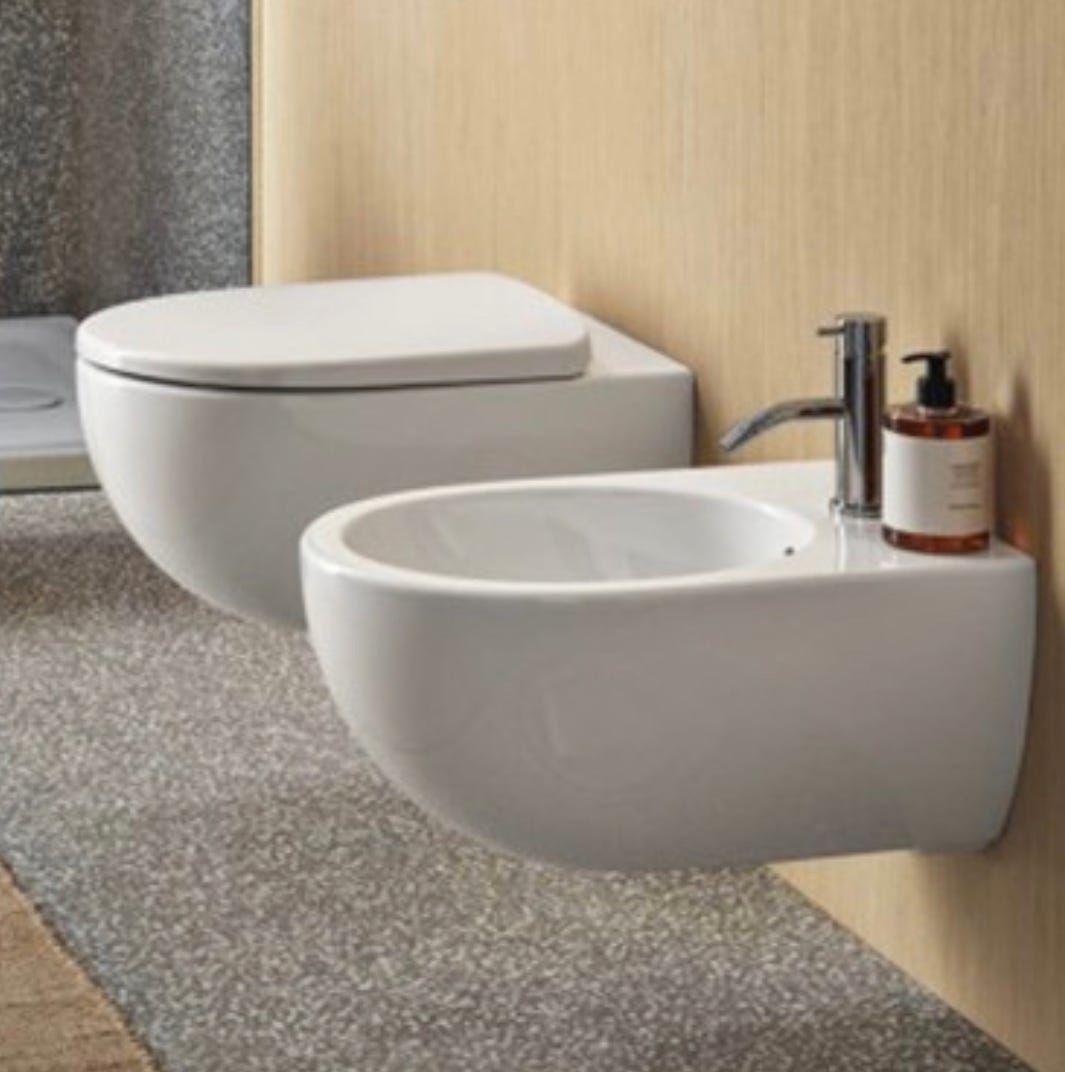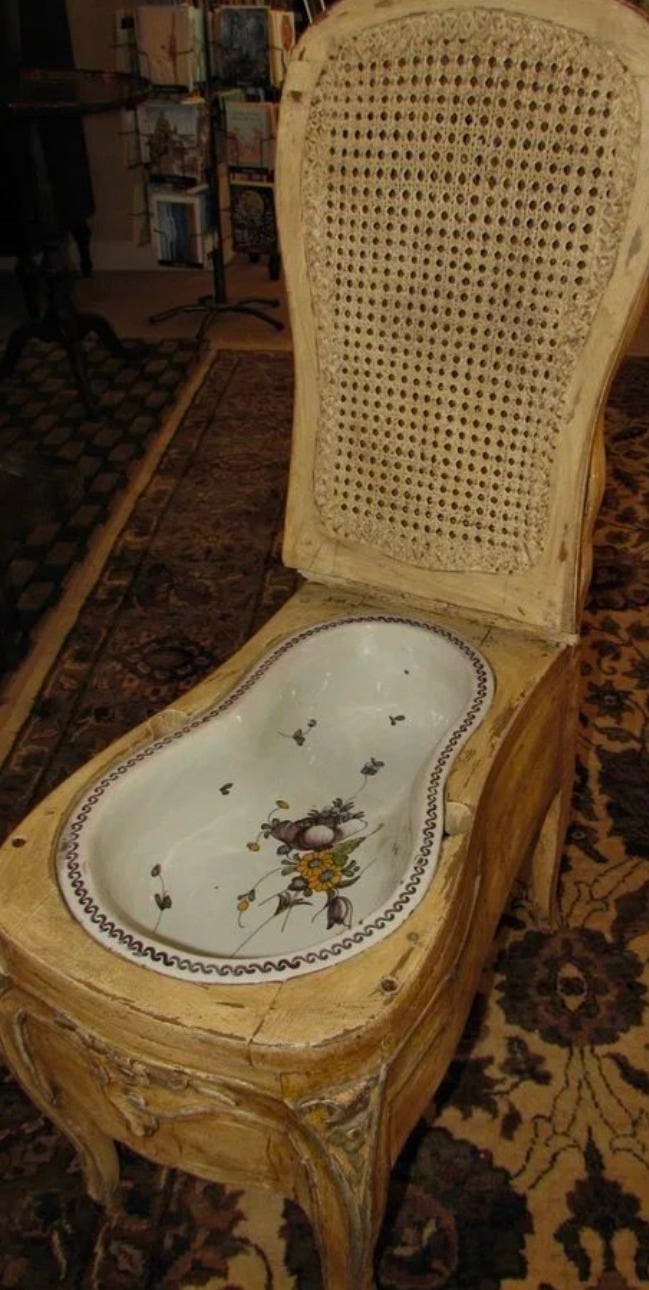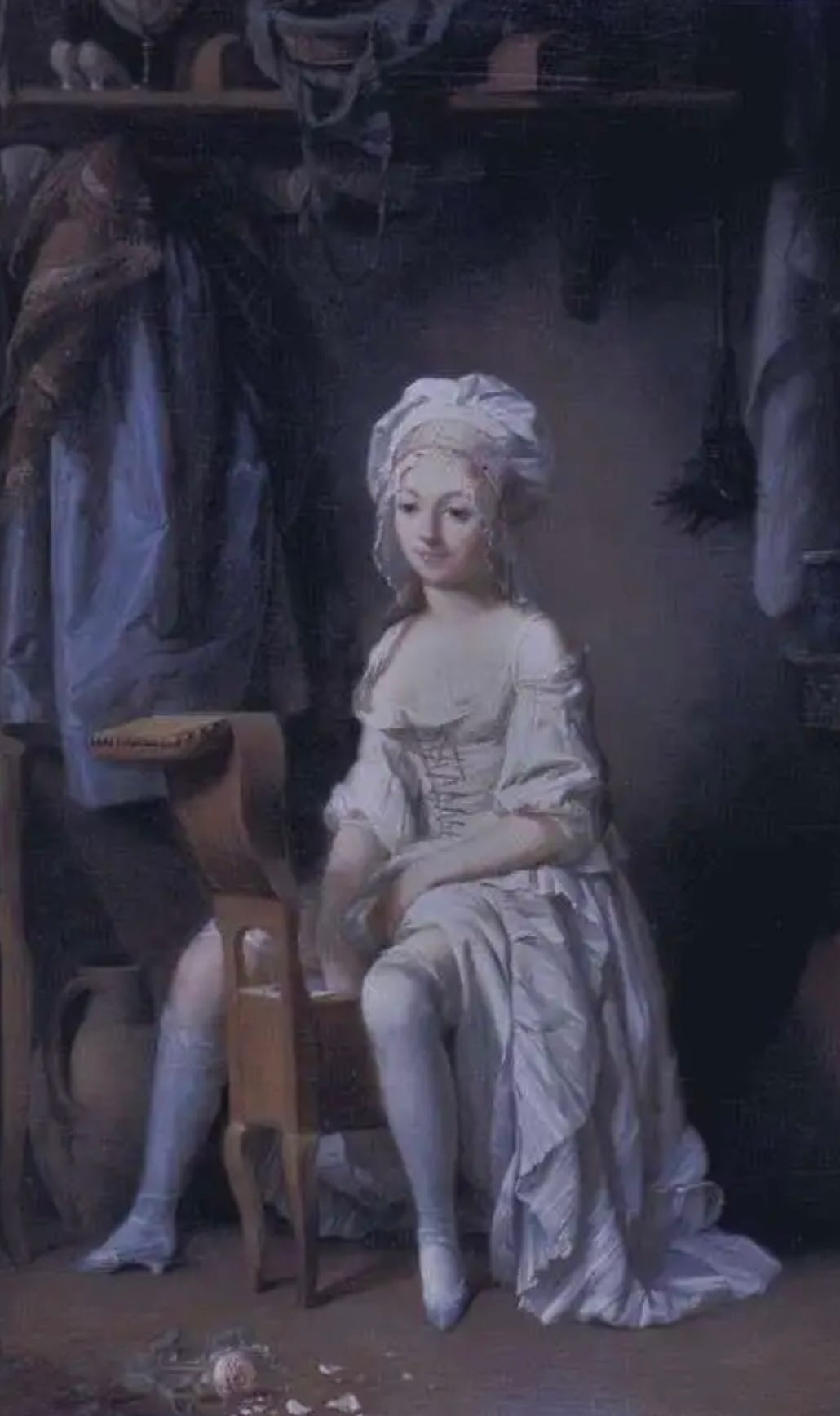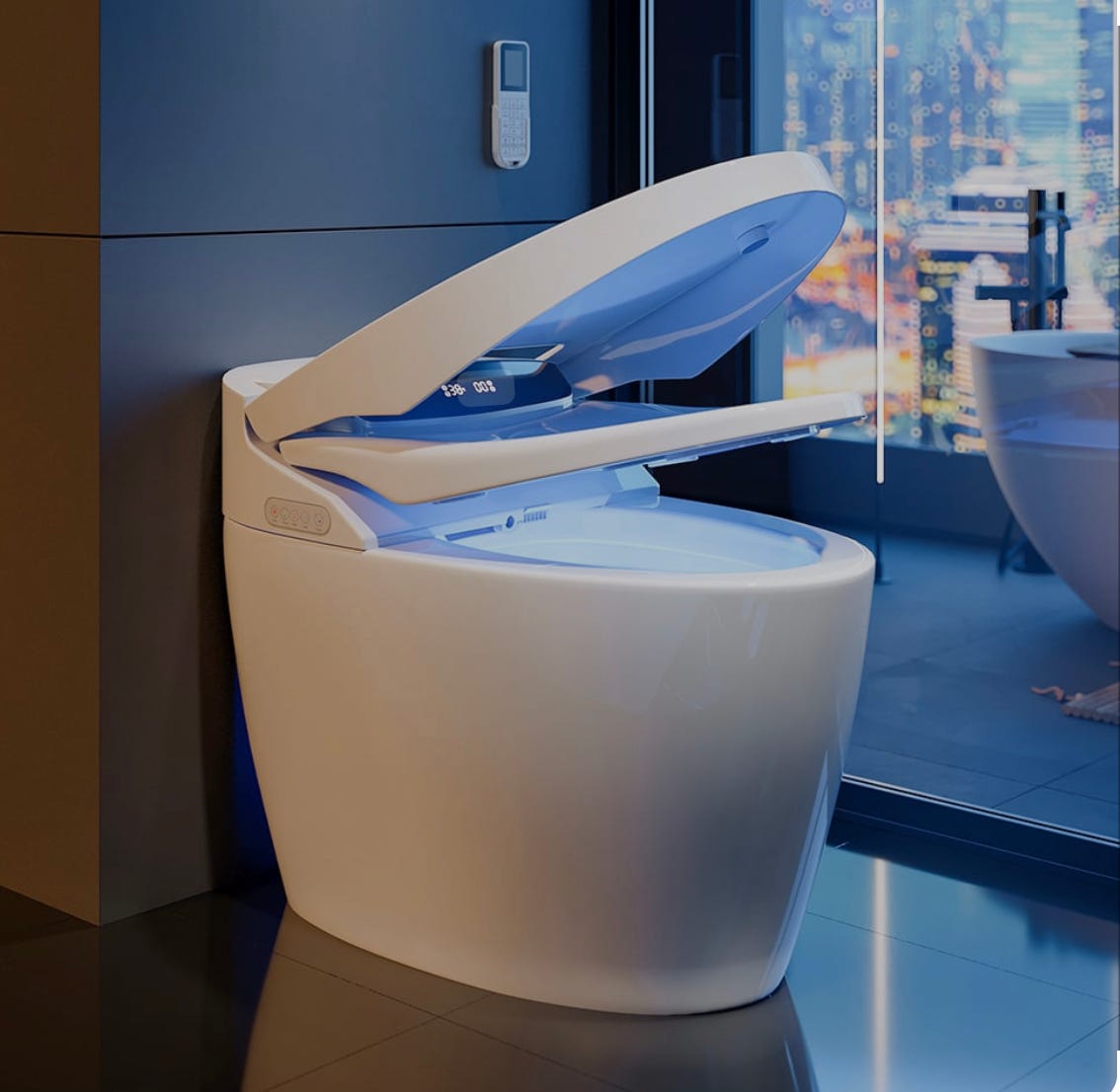Shortly after my parents renovated their bathroom in Montreal, one of my sons asked, wide-eyed and genuinely baffled:
“Dad, why does Nonna have two toilets in her bathroom?”
I paused and said, “Well, those aren’t two toilets. One is... a sink. For your behind.”
They blinked. Then giggled. Then burst into uncontrollable laughter.
And just like that, the bidet became the unexpected highlight of our family visit.
Substack is usually filled with musings on politics, food, art, travel, and romance, but today I bring you something different: a nod to a fixture as essential to Italian life as espresso machines and well-made shoes, the noble bidet.
Let’s Begin
If you’ve ever traveled to Italy, you’ve probably noticed the extra bathroom fixture. While bidets are catching on in many parts of the world, in Italy they’re not just common, they're cultural.
So, why are they so deeply rooted in Italian life?
Naturally, I started with a bit of research. And here’s the twist: the bidet isn’t Italian.
It’s French. Mais oui, les Français.
The word bidet means “pony” or “small horse” because early versions were straddled like one. They first appeared in 17th-century France, likely crafted by furniture makers for the aristocracy. Aside from hygiene, bidets were also used for bedroom romps, giving them a slightly risqué reputation, which may be why they never caught on in Anglo-Saxon countries.
But while the French invented it, the Italians made it theirs.
By the 18th and 19th centuries, Italian nobility had embraced the bidet. Then, in 1975, Italian building codes made them mandatory in all new homes. That’s why today, almost every Italian household has one.
More Than Cleanliness
For Italians, the bidet isn’t just practical, it’s part of la bella figura, the art of presenting yourself well. Cleanliness, elegance, and dignity all factor into it. Whether freshening up after a long day or preparing for a night out, the bidet is part of daily life.
It also filled a need at a time when showers were rare in older homes. In small bathrooms, the bidet served a vital purpose. Even today, trying to rent or buy a place in Italy without one? Almost impossible.
And the stories? They’re legendary.
Napoleon reportedly gave his sister Pauline Borghese a silver-plated bidet as a wedding gift. Marie Antoinette had over a hundred bidets at Versailles, one made of porcelain and gold. Naturally.
Even modern stories are fun, like the Italian couple searching for an apartment in New York and rejecting every listing that lacked a bidet. Or the Canadian tourists who used one to chill wine or wash their dog. (Both true.)
Ask any Italian who’s lived abroad: what do they miss most?
“Finalmente un bidet!” they’ll say on returning home. Re-bidetification is real.
It’s a Natural Advantage
As an Italian now used to North American routines, I’ll admit the bidet didn’t seem essential at first. I rely more on showers. Electricity is cheaper back home, and life moves differently. But over time, I started using it more and more. It doesn’t replace showers, but it’s quite handy. Now, I miss it when I’m in Montreal.
Italy still leads in bidet design and production. The north and central regions are known for beautiful craftsmanship in ceramics and plumbing fixtures. And in today’s world, the bidet checks a lot of boxes: compact, functional, and environmentally friendly. Using one means less toilet paper, less water waste from long showers, and, according to Scientific American—switching to bidets in the U.S. could save 15 million trees a year.
Japan has taken things a step further with high-tech models. They offer heated seats, temperature controlled water jets, air drying, deodorizing function, auto flush, the works. These are now catching on in North America too, and as prices drop, popularity rises.
One Last Thought
My friend Alessandro from Siena told me recently that reading my newsletters helps him appreciate things Italians often take for granted. Well, Ale, here’s another one.
And for my non-Italian friends: if you haven’t yet tried a bidet, you must next time you're in Italy. It’s a must, just like gelato or espresso. Cheers! Bottoms up!











Well, Sally, what a great question—you’ve asked THE question! I’m actually glad you did, because now I have a chance to explain it properly. I didn’t dare go into the details in the original post, just to avoid getting too personal.
So, yes, you do sit on the bidet facing the faucet, just as the name suggests. "Bidet" comes from the French word for “pony,” because you kind of sit on it as if you were riding one.
You start by making sure the water is at a comfortable temperature. Then, you wash your private parts using your hand or a small washcloth. Many bidets have a faucet that’s designed to reach far enough to rinse effectively. Some models even have a built-in spout in the center that sprays water upward. Just a little caution here: make sure you're seated *on* the bidet before turning on that upward spray—or you may end up giving your bathroom a shower too!
There’s usually a towel rack nearby—either in front or to the side, for drying off afterwards.
And that’s pretty much it. Many people have a daily routine that includes using the sink for face, hair, and teeth, and the bidet for their more intimate hygiene. Of course, showers are still very common, but sometimes the sink and the bidet do the job perfectly well, it all depends on what you need. 😉
Nice Story!
And now we include bidet when planning an upgrade for out Bathrooms !
Angelo